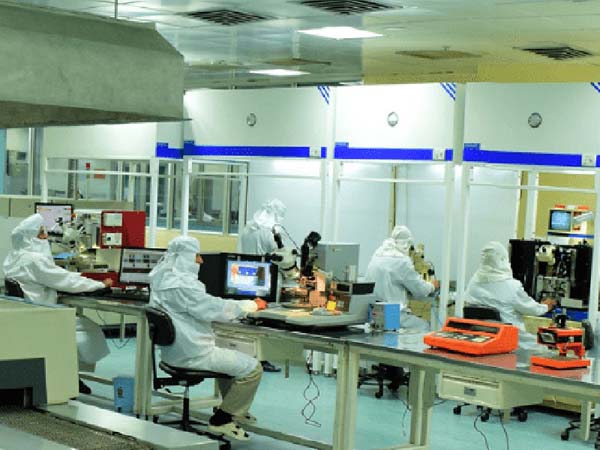
By Anand Parthasarathy
Two years ago, on the sidelines of the India expo of the UK-headquartered Institute of Engineering and Technology in Bangalore, I caught up with Sir Robin Saxby, a former Chairman of IET and now a member of its Board of Governors.
I had many opportunities of meeting him professionally during his 15-year tenure at the Cambridge (UK)-based ARM, arguably one of the most spectacularly successful microprocessor companies, first as CEO for 9 years from 1991 and then as Chairman till 2006.
In his final year with ARM,I reported that he took the unprecedented step of flying the entire board of directors to Bangalore and holding the Annual General Meeting in the city’s Leela Palace Hotel. He explained to me that he thought directors of the company needed to know at first hand how much of the company’s innovations in chip design -- overwhelmingly for mobile phones-- came from its India development centre.
Sir Robin has remained for me a reliable source of gyan about the semiconductor industry over the years. So, on his last visit, I asked for his take on India’s accelerated efforts to attract some of the world’s leading chip making companies into setting up foundries here. He thought for what seemed forever and was actually about a minute, then said in his measured way : “If India gets into any new field of technology, it should first make sure it is the world’s best at it”. I may be paraphrasing a bit here but the sense I got was: don’t get into businesses where you can’t excel.
In the time that has gone by, this question at least is now moot and the government has put its full weight and a kitty of $ 10 billion ( Rs 76,000 crores at 2021 exchange rates) behind efforts to make India a semiconductor manufacturing nation, not just a massive consumer of chips. In a flurry of announcements last month which NewIndiaAbroad reported, three different initiatives were approved for chip manufacturing and assembly plants in Gujarat and Assam, adding to the packaging plant by the US company Micron already in the works.
Of these only the plant proposed by the Tatas with Taiwan-based PSMC is a chip foundry in the true sense and it will eventually make chips in 28 nanometer to 35 nanometer (nm) density. There are appliances aplenty where such chips are in use but let us also remember that established chip foundries in Taiwan and the US run by TSMC, Intel and Samsung currently turn out chips many generations ahead of what the first Indian plant is aiming to do – in the 3 to 4 nm size density. TSMC or the Taiwan Semiconductor Manufacturing Company, the world’s biggest chip maker, has already announced 2 nm chips for 2025. Just to get a sense of the size, a strand of human hair is 2.5 nm in diameter.
This is not to belittle Indian efforts but to put them in a cold perspective. Even a year before any of the recently sanctioned India-based chip makers can roll out the first chip from a foundry, we seem to be indulging in super nationalistic hype that the ‘breaking news’ visual media does nothing to moderate. The IT Ministry has already declared that India will be among the world’s top 5 semiconductor producers within 5 years. Good to have a confident vision, but cool-headed realism serves better than hype in technology matters.
In point of fact, India already has a semicon foundry up and working: the SemiConductor Laboratory ( formerly Semiconductor Complex Ltd) both abbreviated to SCL, in Mohali near Chandigarh which was set up in 1976 but was defunct for many years after a mysterious fire destroyed much it. Today it is run by the IT Ministry and makes chips for Defence and Space requirements in the 180 nm density. Government has set aside $1-$2 billion to modernise this plant to make chips in 28 nm.
One thing is playing in India’s favour to kickstart its chip ambitions: A report released last week by Global Data on ‘Geopolitics in Tech, Media and Telecom’ suggests that rivalry between the US and China is causing disruptions that give significant pull to countries like India, Japan, South Korea and the Middle East. In other words, As the US leans on its industry to pull away from manufacturing in China, India looms as an attractive option. This could translate into more interest in setting up fabs in India.
But from that -- to staking global leadership is a giant leap of faith that not every observer may be willing to make. And when someone like Raghuram Rajan, the former governor of India’s central bank, the Reserve Bank of India (and now a professor at the University of Chicago’s Booth School of Business) dares to question the priority of allocating 10 billion dollars to chip-making rather than fixing the educational system (which needs to provide the skills to run all those chip foundries), members of government dismiss him as a ‘parachute economist’.
If we can eschew hyperbole and concentrate on clearheaded roadmaps, India may yet achieve its dreams of making her own microchips – in time, in measured steps.
As we were taught in childhood, it was the slow and steady tortoise that overtook an over-confident hare in Aesop’s famous fable.
This article has appeared in NewIndiaAbroad